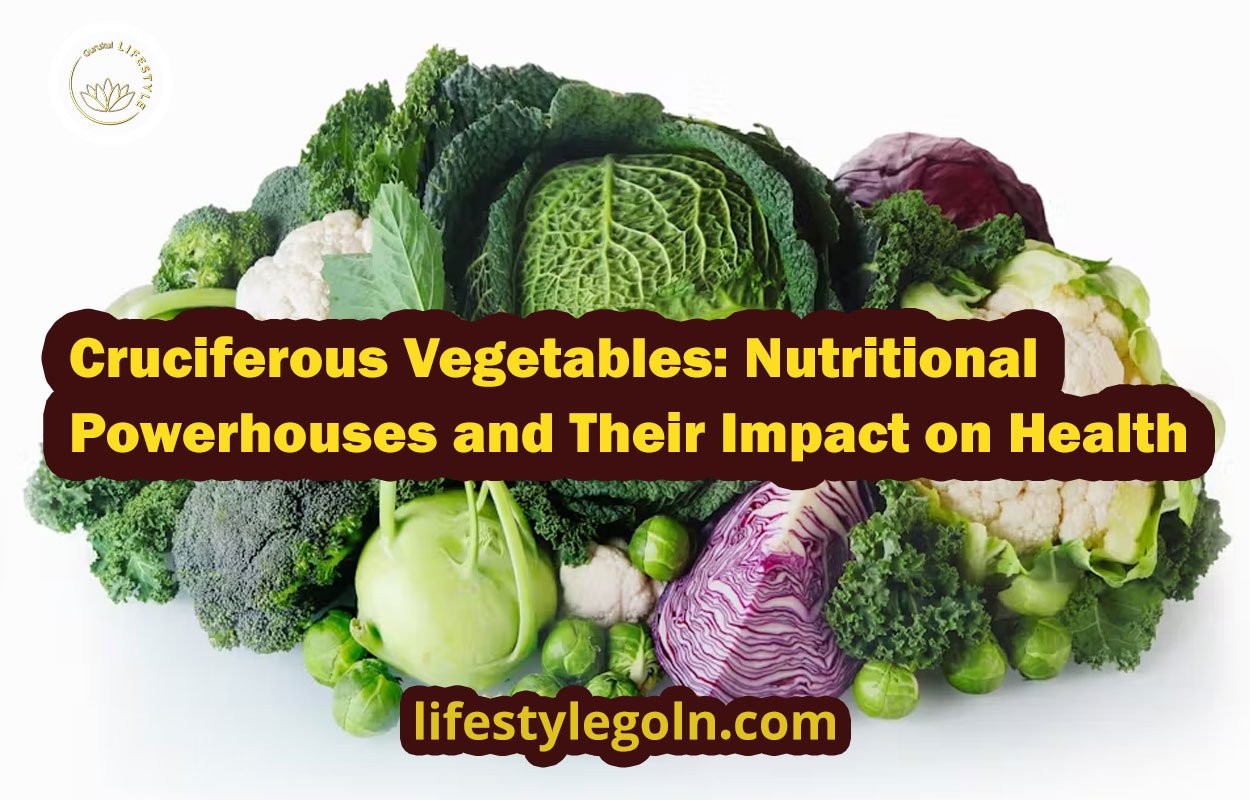Cruciferous vegetables belong to the Brassicaceae family and encompass a wide variety of nutritious plants known for their distinctive four-petal flowers and cross-shaped arrangement of leaves. These vegetables have been an integral part of human diets for centuries, contributing to diverse cuisines across the globe. Examples of cruciferous vegetables include broccoli, cauliflower, cabbage, Brussels sprouts, kale, collard greens, bok choy, arugula, and radishes. This essay aims to explore the nutritional value, health benefits, and potential medicinal properties of cruciferous vegetables, highlighting their significant impact on human health.
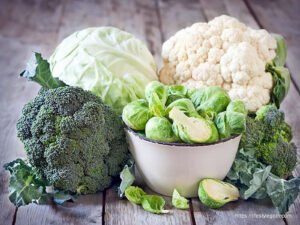
Cruciferous Vegetables

Section 1: Nutritional Composition of Cruciferous Vegetables
1.1 Macronutrients:
Cruciferous vegetables are low in calories and fat, making them an excellent addition to weight-conscious diets. On average, they contain approximately 90% water by weight, ensuring hydration and aiding digestion. These vegetables also provide carbohydrates in the form of dietary fiber, which plays a crucial role in digestive health, regulating blood sugar levels, and promoting satiety.
1.2 Micronutrients:
One of the key attributes of cruciferous vegetables is their high content of essential vitamins and minerals. They are particularly rich in vitamin C, an antioxidant that boosts the immune system and aids in collagen synthesis. Additionally, cruciferous vegetables are abundant in vitamin K, vital for blood clotting and bone health. Other essential vitamins found in these vegetables include vitamin A (beta-carotene), vitamin B6, vitamin B9 (folate), and various B vitamins.
Moreover, cruciferous vegetables provide an array of essential minerals like potassium, calcium, magnesium, and phosphorus, all of which are crucial for various physiological functions, including muscle function, nerve conduction, and bone density.
1.3 Phytochemicals:
Cruciferous vegetables are renowned for their high content of bioactive compounds known as phytochemicals. These compounds, such as glucosinolates, isothiocyanates, and indoles, are responsible for the vegetables’ distinctive flavors and vibrant colors. Phytochemicals are not only beneficial to the plants themselves but also confer various health benefits to humans when consumed regularly.
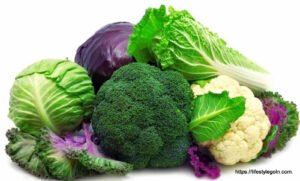
Section 2: Health Benefits of Cruciferous Vegetables
2.1 Cancer Prevention:
One of the most significant and extensively studied health benefits of cruciferous vegetables is their potential in cancer prevention. Glucosinolates found in these vegetables can be broken down into active compounds such as indoles and isothiocyanates. These compounds have been shown to inhibit the growth of cancer cells, induce apoptosis (cell death), and neutralize carcinogens, reducing the risk of various types of cancer, including lung, breast, prostate, and colorectal cancer.
Sulforaphane, a potent compound found in broccoli, has attracted significant attention in cancer research due to its anti-cancer properties. Studies have shown that sulforaphane may inhibit the growth of tumor cells and reduce the risk of cancer recurrence.
2.2 Anti-inflammatory Effects:
Cruciferous vegetables contain a variety of anti-inflammatory compounds that help combat chronic inflammation, a key factor in the development of various chronic diseases. The anti-inflammatory properties of these vegetables may provide relief for individuals suffering from inflammatory conditions such as arthritis, asthma, and inflammatory bowel disease.
2.3 Cardiovascular Health:
The consumption of cruciferous vegetables is associated with improved cardiovascular health. Their high content of dietary fiber helps lower cholesterol levels, reducing the risk of heart disease and stroke. Additionally, the presence of antioxidants like vitamin C and beta-carotene protects blood vessels from damage and enhances heart health.
2.4 Bone Health:
Cruciferous vegetables are excellent sources of vitamin K, calcium, and magnesium, all of which are essential for maintaining strong and healthy bones. Vitamin K is crucial for proper calcium absorption, promoting bone density and reducing the risk of osteoporosis and fractures.
2.5 Digestive Health:
The dietary fiber present in cruciferous vegetables aids in maintaining a healthy digestive system by promoting regular bowel movements, preventing constipation, and supporting gut health. Furthermore, the compound sulforaphane has been shown to have protective effects against Helicobacter pylori infection, a bacterium linked to peptic ulcers.
2.6 Immune System Support:
The high vitamin C content in cruciferous vegetables strengthens the immune system, helping the body fight off infections and illnesses effectively. Moreover, the phytochemicals present in these vegetables may boost immune responses, providing additional protection against diseases.

Section 3: Medicinal Properties and Potential Uses
3.1 Detoxification:
Cruciferous vegetables contain compounds like glucosinolates and isothiocyanates that support the liver’s detoxification process. These compounds enhance the liver’s ability to neutralize and eliminate harmful toxins from the body, promoting overall detoxification and reducing the burden on the liver.
3.2 Cognitive Function:
Emerging research suggests that the antioxidants and anti-inflammatory properties of cruciferous vegetables may benefit brain health and cognitive function. These vegetables may play a role in protecting against age-related cognitive decline and neurodegenerative diseases like Alzheimer’s and Parkinson’s.
3.3 Skin Health:
The antioxidant and anti-inflammatory properties of cruciferous vegetables contribute to healthier and more radiant skin. Vitamin C and beta-carotene, in particular, help in collagen production, promoting skin elasticity and reducing the signs of aging.

Section 4: Culinary and Cooking Techniques
4.1 Culinary Uses:
Cruciferous vegetables are incredibly versatile and can be incorporated into a wide range of delicious dishes, making them popular ingredients in various cuisines worldwide. They can be consumed raw in salads, lightly steamed, stir-fried, roasted, or even used in soups and stews.
4.2 Cooking Techniques:
To preserve the maximum nutritional value of cruciferous vegetables, it is essential to adopt suitable cooking techniques. Light steaming or blanching is recommended to maintain nutrient content and flavor. Overcooking may lead to nutrient loss, especially of heat-sensitive vitamins like vitamin C.

Section 5: Precautions and Potential Side Effects
5.1 Goitrogens:
Cruciferous vegetables contain naturally occurring substances known as goitrogens that can interfere with thyroid function. For individuals with thyroid disorders, excessive consumption of raw cruciferous vegetables may pose a concern. However, cooking these vegetables can reduce the impact of goitrogens on thyroid function.
5.2 Digestive Issues:
In some individuals, excessive consumption of cruciferous vegetables can lead to digestive discomfort, such as gas and bloating. Moderation is advised, especially for those with sensitive digestive systems.
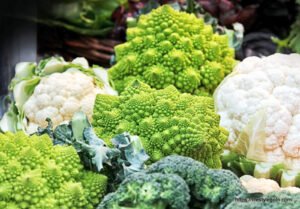
Section 6: Research and Clinical Studies
6.1 Cancer Research:
Numerous research studies have investigated the relationship between cruciferous vegetables and cancer prevention. The National Cancer Institute and other health organizations have conducted extensive research on the anticancer properties of these vegetables. Observational studies have consistently shown that individuals with higher cruciferous vegetable consumption have a reduced risk of developing certain types of cancer. These studies have highlighted the importance of regular intake of cruciferous vegetables as part of a cancer-preventive diet.
6.2 Cardiovascular Disease:
Clinical trials have demonstrated that incorporating cruciferous vegetables into the diet can positively impact cardiovascular health. A study published in the journal Nutrients found that consuming broccoli, in particular, led to improved heart health by reducing LDL cholesterol levels and increasing HDL cholesterol levels. Another study in the American Journal of Hypertension showed that increased cruciferous vegetable consumption correlated with lower blood pressure, suggesting a protective effect against hypertension.
6.3 Diabetes Management:
Cruciferous vegetables have also been studied for their potential benefits in diabetes management. Research published in the journal PLOS Medicine suggested that a diet rich in cruciferous vegetables may be associated with a lower risk of developing type 2 diabetes. The study attributed this effect to the presence of antioxidants and dietary fiber, which help regulate blood sugar levels and improve insulin sensitivity.
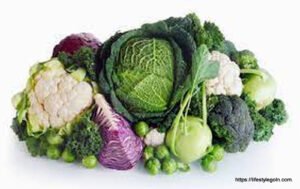
Section 7: Culinary Tips and Recipes
7.1 Cooking Techniques:
To preserve the nutritional value and flavors of cruciferous vegetables, it is essential to adopt appropriate cooking techniques. Lightly steaming or sautéing these vegetables helps maintain their texture and nutrient content. Additionally, roasting or grilling them with minimal added fat can enhance their flavors.
7.2 Recipes:
Here are some delicious and nutritious recipes featuring cruciferous vegetables:
a) Roasted Brussels Sprouts with Balsamic Glaze: Ingredients:
- 1 lb Brussels sprouts, trimmed and halved
- 2 tbsp olive oil
- 2 tbsp balsamic vinegar
- 2 cloves garlic, minced
- Salt and pepper to taste
Instructions: Preheat the oven to 425°F (220°C). In a large bowl, toss the halved Brussels sprouts with olive oil, minced garlic, salt, and pepper. Spread the Brussels sprouts evenly on a baking sheet lined with parchment paper. Roast for 20-25 minutes until they are crispy and caramelized. Drizzle balsamic vinegar over the roasted Brussels sprouts and toss gently before serving.
b) Lemon Garlic Kale Salad: Ingredients:
- 1 bunch kale, stems removed and leaves chopped
- 2 tbsp lemon juice
- 1 tbsp olive oil
- 2 cloves garlic, minced
- 1/4 cup grated Parmesan cheese (optional)
- Salt and pepper to taste
Instructions: In a large mixing bowl, massage the chopped kale with lemon juice, olive oil, minced garlic, salt, and pepper for a few minutes until the kale becomes tender. Add grated Parmesan cheese if desired, and toss to combine. Let the salad sit for a few minutes before serving.
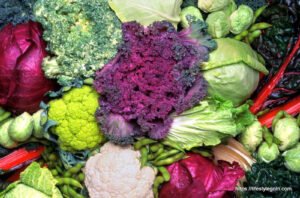
Section 8: The Future of Cruciferous Vegetables in Nutrition and Health
8.1 Functional Foods and Nutraceuticals:
The growing interest in functional foods and nutraceuticals has paved the way for innovative approaches to incorporating cruciferous vegetables into various products. Researchers and food technologists are exploring ways to extract and concentrate the bioactive compounds from these vegetables to create supplements or functional food products that offer targeted health benefits. These products may cater to specific health concerns, such as cancer prevention or immune support, further enhancing the accessibility and versatility of cruciferous vegetables.
8.2 Plant-Based Diets and Sustainability:
With the increasing awareness of environmental sustainability and the benefits of plant-based diets, cruciferous vegetables have gained popularity among those seeking eco-friendly food choices. These vegetables have a relatively low carbon footprint compared to animal-based products, making them an environmentally conscious option. As plant-based diets continue to gain traction globally, cruciferous vegetables will likely play a vital role in meeting the nutritional needs of a growing population while preserving the planet’s resources.
8.3 Personalized Nutrition:
Advancements in personalized nutrition and nutrigenomics are uncovering how individuals’ genetic makeup influences their responses to specific nutrients. Cruciferous vegetables, with their diverse phytochemical profiles, may have different effects on individuals based on their genetic predisposition. Future research may focus on identifying genetic markers that influence how people metabolize and benefit from the compounds in cruciferous vegetables. This knowledge could lead to personalized dietary recommendations tailored to each person’s unique genetic profile, optimizing the health benefits of these vegetables for individual needs.

Section 9: Promoting Cruciferous Vegetables for Global Health
9.1 Nutrition Education:
Promoting the consumption of cruciferous vegetables requires effective nutrition education and public health campaigns. Raising awareness about the health benefits of these vegetables, their culinary versatility, and their environmental advantages can encourage people to incorporate them into their daily diets. Educational initiatives can be targeted at schools, workplaces, healthcare facilities, and community organizations to reach a wide audience and foster healthy eating habits.
9.2 Culinary Innovation:
Chefs, food bloggers, and culinary enthusiasts can contribute significantly to promoting cruciferous vegetables through culinary innovation. By creating delicious and appealing recipes that showcase the flavors and textures of these vegetables, culinary professionals can inspire people to explore new ways of incorporating cruciferous vegetables into their meals. Cooking shows, cookbooks, and online platforms can serve as platforms to showcase the culinary potential of these nutritious vegetables.
9.3 Policy and Agricultural Support:
Governments and agricultural policymakers can play a vital role in promoting the cultivation and availability of cruciferous vegetables. Supporting local farmers to grow these crops sustainably and providing incentives for their production can increase their accessibility and affordability. Additionally, policymakers can incorporate cruciferous vegetables into national dietary guidelines and nutrition programs, emphasizing their health benefits and encouraging their consumption.
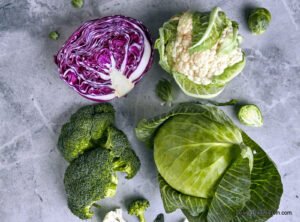
Cruciferous vegetables represent a remarkable group of plants that offer an abundance of essential nutrients and bioactive compounds, promoting overall health and well-being. As research continues to unveil their diverse health benefits and potential medicinal properties, the significance of incorporating cruciferous vegetables into our daily diets becomes increasingly evident.
The future of these vegetables is promising, with ongoing advancements in nutrition science, personalized health, and culinary innovation. By promoting their consumption through nutrition education, culinary creativity, and policy support, we can harness the full potential of cruciferous vegetables to create a healthier and sustainable world.
As individuals, communities, and societies, we must embrace the nutritional power of cruciferous vegetables and integrate them into our lives to cultivate a culture of health and well-being that benefits both ourselves and our planet. By nourishing our bodies with the goodness of these vegetables, we can take a significant step towards achieving optimal health and enjoying a life of vitality and longevity.
See more:

